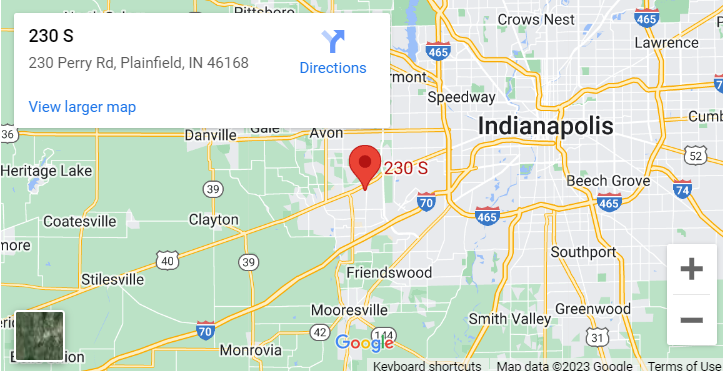Cybersecurity breaches cost companies an average of $4.45 million per incident in 2023. Traditional security models that trust users inside the network perimeter have failed spectacularly. The zero trust security model basics flip this assumption on its head: trust no one, verify everything. This approach assumes every user, device, and network component could be compromised. I’ve watched too many organizations learn this lesson the hard way after a breach.
Key Takeaways
- Zero trust assumes breach has already occurred and verifies every access request
- Implementation requires identity verification, device compliance, and network segmentation
- Traditional perimeter-based security models are obsolete in cloud and remote work environments
- Success depends on continuous monitoring and adaptive security policies
- Organizations see 50% reduction in breach costs with mature zero trust implementations
Understanding Zero Trust Security Model Basics
Zero trust isn’t a product you buy. It’s a security philosophy that treats every access request as potentially hostile. The model operates on three core principles: verify explicitly, use least privilege access, and assume breach.
Traditional security models built walls around networks. Once inside, users moved freely. This worked when employees sat at office desks using company computers. It fails miserably with remote work, cloud applications, and mobile devices.
I’ve implemented zero trust frameworks for dozens of organizations. The biggest mental shift happens when leadership realizes their current security assumptions are backwards. You’re not protecting a castle with a moat. You’re securing a city with multiple entry points, exit points, and internal threats.
The Trust But Verify Problem
Ronald Reagan popularized “trust but verify” during nuclear disarmament talks. It sounds reasonable for diplomacy. It’s disastrous for cybersecurity.
Every compromised credential, every insider threat, every lateral movement attack exploits misplaced trust. Zero trust eliminates this vulnerability by verifying every request regardless of source location or previous authentication status.
Core Components of Zero Trust Architecture
Zero trust implementation requires five foundational elements:
- Identity verification – Multi-factor authentication for every user and service account
- Device compliance – Continuous assessment of device security posture
- Network segmentation – Microsegmentation to limit lateral movement
- Application security – Secure access service edge (SASE) for cloud applications
- Data protection – Encryption and rights management for sensitive information
Why Traditional Security Models Fail
Perimeter security made sense in 1995. Users worked from offices. Applications ran on internal servers. Network boundaries were clear and defendable.
That world no longer exists. Modern work happens everywhere except inside traditional network perimeters.
The Remote Work Reality
COVID-19 accelerated remote work adoption by five years overnight. Organizations scrambled to provide secure access to distributed teams. VPNs became bottlenecks. Cloud applications multiplied security complexity.
I watched companies with strong perimeter defenses crumble under remote work pressure. Their security models assumed physical presence and network location indicated trustworthiness. Remote work shattered these assumptions.
Cloud Migration Challenges
Cloud adoption eliminates traditional network perimeters entirely. Applications, data, and users exist across multiple cloud providers and geographic regions. Perimeter security becomes impossible to implement and maintain.
The Cybersecurity and Infrastructure Security Agency (CISA) recognizes this challenge. Their zero trust maturity model provides government agencies with implementation guidance for cloud-first security architectures.
| Traditional Security | Zero Trust Security |
|---|---|
| Trust internal network users | Verify every access request |
| Perimeter-based protection | Identity-based protection |
| Static security policies | Dynamic, risk-based policies |
| Reactive threat response | Continuous security monitoring |
Implementing Zero Trust: A Practical Roadmap
Zero trust implementation requires methodical planning and phased execution. Organizations that attempt big-bang implementations typically fail. Those that follow structured approaches see measurable security improvements within months.
Phase 1: Identity Foundation
Start with identity management. Every zero trust implementation begins with knowing who and what is trying to access your resources.
- Deploy single sign-on (SSO) for all applications
- Implement multi-factor authentication (MFA) organization-wide
- Establish privileged access management (PAM) for administrative accounts
- Create conditional access policies based on user risk profiles
Identity management provides the authentication foundation for all other zero trust components. Without reliable identity verification, every other security control becomes unreliable.
Phase 2: Device Security and Compliance
Compromised devices bypass the strongest identity controls. Zero trust requires continuous device security assessment and compliance enforcement.
Device compliance policies should verify:
- Operating system patch levels and security updates
- Antivirus software installation and signature updates
- Encryption status for local storage and communications
- Mobile device management (MDM) enrollment and policy compliance
- Network security configuration and firewall status
I’ve seen organizations discover hundreds of non-compliant devices during initial assessments. Don’t be surprised by what you find. Focus on rapid remediation rather than blame assignment.
Phase 3: Network Segmentation and Access Control
Network segmentation limits blast radius when breaches occur. Microsegmentation takes this concept to its logical conclusion by treating every device and application as its own security zone.
Software-defined perimeters (SDP) and secure access service edge (SASE) solutions provide network-level zero trust enforcement. These technologies create encrypted tunnels between verified users and authorized resources.
Phase 4: Application and Data Protection
Zero trust extends beyond network access to application-level security and data protection. Cloud access security brokers (CASB) provide visibility and control for cloud application usage.
Data loss prevention (DLP) and rights management solutions ensure sensitive information remains protected regardless of user location or device type. The NIST Cybersecurity Framework provides comprehensive guidance for data protection strategies within zero trust architectures.
Measuring Zero Trust Success
Zero trust implementation success requires measurable security improvements. Organizations need metrics that demonstrate reduced risk and improved security posture.
Key Performance Indicators
Track these metrics to measure zero trust effectiveness:
- Mean time to detect (MTTD) security incidents
- Mean time to respond (MTTR) to security alerts
- Percentage of successful phishing attempts
- Number of lateral movement incidents
- Compliance with access control policies
- User productivity and satisfaction scores
I recommend quarterly security assessments during the first year of implementation. Monthly reviews work better for organizations with complex compliance requirements or high-risk profiles.
Cost-Benefit Analysis
Zero trust implementations require significant upfront investment. Organizations should track return on investment through reduced security incidents, improved compliance posture, and increased operational efficiency.
Mature zero trust implementations typically show 50% reduction in security incident costs and 30% improvement in compliance audit results. Remote work productivity often increases due to simplified secure access procedures.
Conclusion
The zero trust security model basics represent a fundamental shift from location-based trust to identity-based verification. Traditional perimeter security cannot protect modern distributed workforces and cloud-first architectures. Organizations that embrace zero trust principles see measurable improvements in security posture and reduced breach costs. Start with identity management, add device compliance, implement network segmentation, and protect applications and data. The transition takes time, but the security improvements justify the investment. Your next security breach is not a matter of if, but when. Zero trust helps you detect, contain, and respond more effectively when it happens.
FAQ
What is the main difference between zero trust and traditional security?
Traditional security trusts users and devices inside the network perimeter. Zero trust security model basics require verification for every access request regardless of location or previous authentication. This eliminates the assumption that network location indicates trustworthiness.
How long does zero trust implementation take?
Most organizations complete basic zero trust implementation within 12-18 months. Complex enterprises with legacy systems may require 24-36 months for full implementation. The key is phased deployment starting with identity management and expanding to network segmentation and data protection.
What are the biggest challenges in zero trust adoption?
Legacy application integration presents the biggest technical challenge. Cultural resistance to increased security verification creates the biggest organizational challenge. Budget constraints and skills shortages also slow adoption. Success requires executive sponsorship and dedicated project management.
Can small businesses implement zero trust security?
Yes, but implementation approaches differ significantly. Small businesses should focus on cloud-based zero trust solutions that require minimal on-premises infrastructure. Many managed service providers offer zero trust implementation and management services designed for smaller organizations.



